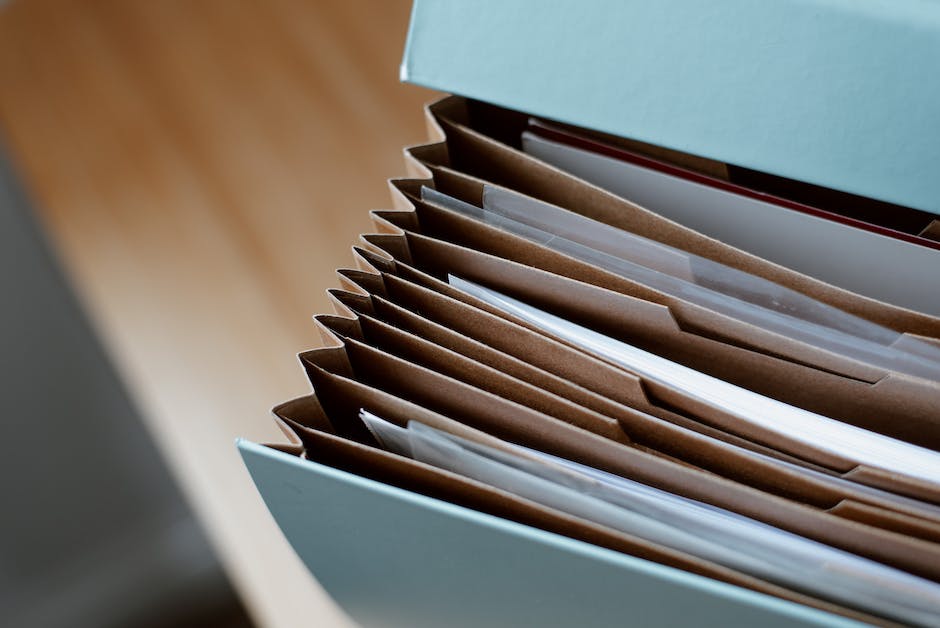Introduction
Investing in property in Calpe, Spain can be a great way to diversify your portfolio and take advantage of the country’s booming real estate market. Calpe is a popular tourist destination located on the Costa Blanca, and it offers a wide range of properties to suit all budgets and needs. Whether you’re looking for a holiday home, a rental property, or a long-term investment, Calpe has something for everyone. In this guide, we’ll discuss the different types of property available in Calpe, the process of buying a property, and the benefits of investing in Calpe.
How to Find the Right Property in Calpe for Investment
Investing in property in Calpe can be a great way to diversify your portfolio and generate a steady income. However, it is important to take the time to research the market and find the right property for your needs. Here are some tips to help you find the right property in Calpe for investment.
1. Research the Market: Before investing in any property, it is important to research the local market. Look at the current trends in the area, such as the average price of properties, the types of properties available, and the rental yields. This will help you to get an idea of what kind of return you can expect from your investment.
2. Consider Your Budget: When looking for a property in Calpe, it is important to consider your budget. Make sure that you are realistic about what you can afford and that you are not stretching yourself too thin.
3. Location: Location is key when it comes to investing in property. Look for properties in areas that are close to amenities such as shops, restaurants, and public transport. This will make the property more attractive to potential tenants.
4. Property Type: Consider the type of property you are looking for. Do you want a house, an apartment, or a villa? Think about the size of the property and the number of bedrooms and bathrooms you need.
5. Hire a Professional: It is always a good idea to hire a professional to help you find the right property in Calpe. A real estate agent will be able to provide you with valuable advice and help you find the perfect property for your needs.
By following these tips, you can be sure to find the right property in Calpe for investment. Take your time to research the market and consider your budget, location, and property type before making any decisions. With the help of a professional, you can be sure to find the perfect property for your needs.
Understanding the Rental Market in Calpe
Calpe is a popular tourist destination located on the Costa Blanca in Spain. It is known for its stunning beaches, vibrant nightlife, and its Mediterranean climate. As a result, it has become a popular destination for both short-term and long-term rentals.
The rental market in Calpe is highly competitive, with a wide range of properties available to rent. The most popular type of rental property is an apartment, which can range from basic studio apartments to luxury penthouses. There are also villas and townhouses available for rent, as well as holiday homes and beachfront properties.
The cost of renting a property in Calpe depends on a number of factors, including the size and location of the property, the amenities offered, and the length of the rental period. Generally speaking, the longer the rental period, the lower the cost. For example, a one-month rental may cost more than a six-month rental.
The rental market in Calpe is also affected by seasonal demand. During the summer months, when the weather is at its best, rental prices tend to be higher. Conversely, during the winter months, when the weather is cooler, rental prices tend to be lower.
When renting a property in Calpe, it is important to consider the local laws and regulations. For example, some properties may require a minimum rental period, while others may require a security deposit. It is also important to be aware of any additional fees or taxes that may be applicable.
Overall, the rental market in Calpe is highly competitive and offers a wide range of properties to suit all budgets and needs. With careful research and planning, it is possible to find the perfect rental property in Calpe.
Tips for Negotiating the Best Price on a Property in Calpe
1. Research the Market: Before you begin negotiating, it is important to research the local market and understand the current trends in the area. Knowing the average prices of similar properties in the area will give you an idea of what is a fair price for the property you are interested in.
2. Make an Offer: Once you have done your research, you can make an offer on the property. It is important to make an offer that is reasonable and in line with the market value of the property.
3. Negotiate: Once you have made an offer, it is time to negotiate. Be prepared to negotiate on price, terms, and conditions. Be willing to compromise and be open to counteroffers.
4. Get Professional Help: If you are not experienced in negotiating, it is a good idea to get professional help. A real estate agent or lawyer can help you navigate the process and ensure that you get the best deal possible.
5. Be Patient: Negotiating can be a long process, so it is important to be patient. Don’t be afraid to walk away if the deal isn’t right for you.
What to Look for When Inspecting a Property in Calpe
When inspecting a property in Calpe, it is important to take the time to carefully assess the condition of the property. Here are some key points to consider when inspecting a property in Calpe:
1. Location: Consider the location of the property and its proximity to amenities such as shops, restaurants, and public transportation.
2. Structure: Inspect the structure of the property, including the walls, floors, and ceilings. Look for signs of damage or wear and tear.
3. Electrical and Plumbing: Check the electrical and plumbing systems to ensure they are in good working order.
4. Roof: Inspect the roof for any signs of damage or wear and tear.
5. Windows and Doors: Check the windows and doors for any signs of damage or wear and tear.
6. Interior: Inspect the interior of the property, including the walls, floors, and ceilings. Look for signs of damage or wear and tear.
7. Exterior: Inspect the exterior of the property, including the walls, windows, and doors. Look for signs of damage or wear and tear.
8. Landscaping: Inspect the landscaping of the property, including the lawn, trees, and shrubs. Look for signs of damage or wear and tear.
By taking the time to carefully inspect a property in Calpe, you can ensure that you are making a sound investment.
How to Finance an Investment Property in Calpe
Investing in property in Calpe can be a great way to generate income and build wealth. However, it can be difficult to finance an investment property in Calpe due to the high cost of real estate in the area. Fortunately, there are several financing options available to help you purchase an investment property in Calpe.
One of the most common ways to finance an investment property in Calpe is through a mortgage. Mortgages are available from a variety of lenders, including banks, credit unions, and online lenders. When applying for a mortgage, you will need to provide information about your income, assets, and credit history. It is important to shop around to find the best mortgage rate and terms for your situation.
Another option for financing an investment property in Calpe is to use a home equity loan. Home equity loans allow you to borrow against the equity in your home to finance the purchase of an investment property. This can be a good option if you have a lot of equity in your home and are looking for a low-interest loan.
If you are looking for a more flexible financing option, you may want to consider a bridge loan. Bridge loans are short-term loans that are used to bridge the gap between the purchase of an investment property and the sale of another property. Bridge loans are typically used when the investor needs to purchase a property quickly and does not have the funds available to do so.
Finally, you may also be able to finance an investment property in Calpe through a private lender. Private lenders are individuals or companies that are willing to lend money to investors. Private lenders typically charge higher interest rates than banks and other traditional lenders, but they may be willing to provide more flexible terms.
No matter which financing option you choose, it is important to do your research and compare different lenders to find the best deal for your situation. With the right financing, you can purchase an investment property in Calpe and start building your wealth.
The Benefits of Investing in Property in Calpe
Investing in property in Calpe, Spain, is an excellent opportunity for those looking to make a sound financial investment. Located on the Costa Blanca, Calpe is a popular tourist destination and a great place to live. With its stunning beaches, vibrant culture, and excellent infrastructure, Calpe is an ideal location for those looking to invest in property. Here are some of the benefits of investing in property in Calpe.
First, Calpe is a great place to live. With its Mediterranean climate, Calpe enjoys warm summers and mild winters, making it an ideal place to live year-round. The area is also home to a variety of attractions, including the Calpe Castle, the Peñón de Ifach, and the Calpe Marina. With its stunning beaches, vibrant culture, and excellent infrastructure, Calpe is an ideal location for those looking to invest in property.
Second, Calpe is a great place to invest in property. The area has seen a steady increase in property prices over the past few years, making it an attractive option for investors. Additionally, the area is home to a variety of different types of properties, from apartments to villas, making it easy to find the perfect property for your needs.
Third, Calpe is a great place to rent out property. With its popularity as a tourist destination, Calpe is an ideal location for those looking to rent out their property. The area is home to a variety of different types of rental properties, from apartments to villas, making it easy to find the perfect property for your needs. Additionally, the area is home to a variety of different rental companies, making it easy to find the perfect rental property for your needs.
Finally, Calpe is a great place to invest in property due to its excellent infrastructure. The area is home to a variety of different transportation options, including buses, trains, and airports, making it easy to get around. Additionally, the area is home to a variety of different amenities, including restaurants, shops, and entertainment venues, making it easy to find the perfect property for your needs.
In conclusion, investing in property in Calpe is an excellent opportunity for those looking to make a sound financial investment. With its stunning beaches, vibrant culture, and excellent infrastructure, Calpe is an ideal location for those looking to invest in property. Additionally, the area is home to a variety of different types of properties, from apartments to villas, making it easy to find the perfect property for your needs. Finally, the area is home to a variety of different transportation options, making it easy to get around. For these reasons, investing in property in Calpe is an excellent opportunity for those looking to make a sound financial investment.
The Pros and Cons of Investing in Property in Calpe
Investing in property in Calpe can be a great way to diversify your portfolio and potentially generate a steady income. However, it is important to consider the pros and cons of investing in property in Calpe before making a decision.
Pros
One of the main advantages of investing in property in Calpe is the potential for capital appreciation. Calpe is a popular tourist destination and the demand for property is high, which can lead to an increase in the value of your investment over time. Additionally, the rental market in Calpe is strong, meaning that you can generate a steady income from renting out your property.
Another benefit of investing in property in Calpe is the low cost of living. The cost of living in Calpe is much lower than in other parts of Spain, making it an attractive option for those looking to invest in property.
Finally, Calpe is a beautiful location with plenty of attractions and activities to enjoy. This makes it an ideal place to invest in property, as it can be used as a holiday home or a rental property.
Cons
One of the main drawbacks of investing in property in Calpe is the potential for high taxes. Property taxes in Spain can be quite high, so it is important to factor this into your decision when considering investing in property in Calpe.
Additionally, the rental market in Calpe can be quite competitive, meaning that it can be difficult to find tenants for your property. This can lead to long periods of vacancy, which can be costly.
Finally, the cost of purchasing property in Calpe can be quite high. This is due to the high demand for property in the area, which can drive up prices.
In conclusion, investing in property in Calpe can be a great way to diversify your portfolio and potentially generate a steady income. However, it is important to consider the pros and cons of investing in property in Calpe before making a decision.
How to Manage a Rental Property in Calpe
Managing a rental property in Calpe can be a rewarding experience, but it also requires a great deal of responsibility. As a rental property manager, you will be responsible for ensuring that the property is well maintained, that tenants are happy, and that the rental income is maximized. Here are some tips to help you manage your rental property in Calpe.
1. Understand the Local Laws and Regulations: Before you begin managing a rental property in Calpe, it is important to understand the local laws and regulations. This includes understanding the rental laws, tax laws, and any other regulations that may apply to your property.
2. Set Up a Rental Agreement: A rental agreement is a legally binding document that outlines the terms and conditions of the rental. It should include the rental rate, the length of the lease, the security deposit, and any other rules or regulations that apply to the rental.
3. Screen Potential Tenants: Before you rent out your property, it is important to screen potential tenants. This includes running a background check, verifying employment, and checking references.
4. Collect Rent: Collecting rent on time is essential for managing a rental property. You should set up a system for collecting rent, such as an online payment system or automatic withdrawal from a tenant’s bank account.
5. Maintain the Property: As a rental property manager, it is your responsibility to ensure that the property is well maintained. This includes regular inspections, repairs, and maintenance.
6. Handle Tenant Complaints: As a rental property manager, you will need to handle tenant complaints in a timely and professional manner. This includes responding to emails and phone calls, resolving disputes, and addressing any other issues that may arise.
By following these tips, you can ensure that your rental property in Calpe is well managed and that your tenants are happy. With the right approach, you can maximize your rental income and enjoy the rewards of being a rental property manager.
Tax Implications of Investing in Property in Calpe
Investing in property in Calpe can be a great way to diversify your portfolio and generate income. However, it is important to understand the tax implications of such an investment.
In Spain, all income generated from rental properties is subject to taxation. This includes income from long-term and short-term rentals, as well as income from the sale of a property. The tax rate for rental income is generally between 19% and 24%, depending on the amount of income generated.
In addition to income tax, property owners in Calpe are also subject to capital gains tax. This tax is applied to any profits made from the sale of a property. The rate of capital gains tax is generally 19%, although it can be higher for certain types of properties.
Property owners in Calpe are also subject to local taxes, such as the Impuesto sobre Bienes Inmuebles (IBI). This tax is based on the value of the property and is paid annually. The rate of IBI varies depending on the municipality, but it is typically between 0.3% and 0.5%.
Finally, property owners in Calpe are subject to inheritance tax. This tax is applied to any assets that are inherited by a beneficiary. The rate of inheritance tax is generally between 7.65% and 34%, depending on the value of the assets.
In conclusion, investing in property in Calpe can be a great way to diversify your portfolio and generate income. However, it is important to understand the various taxes that may be applicable to such an investment. By understanding the tax implications of investing in property in Calpe, you can ensure that you are making the most of your investment.
Strategies for Maximizing Returns on Property Investment in Calpe
Property investment in Calpe is a great way to maximize returns and build wealth. With its stunning beaches, vibrant culture, and excellent infrastructure, Calpe is an ideal location for real estate investment. Here are some strategies to help you maximize your returns on property investment in Calpe.
1. Research the Market: Before investing in any property, it is important to research the local market. Look at the current trends in the area, such as the average price of properties, the types of properties available, and the rental yields. This will help you make an informed decision about which property to invest in.
2. Invest in Quality: Investing in quality properties is essential for maximizing returns. Look for properties that are well-maintained and in good condition. This will ensure that you get the best returns on your investment.
3. Consider Location: Location is key when it comes to property investment. Look for properties in areas that are close to amenities such as shops, restaurants, and public transport. This will make the property more attractive to potential tenants and increase the rental yield.
4. Invest in Renovations: Investing in renovations can help to increase the value of a property and maximize returns. Consider making improvements such as adding a new kitchen or bathroom, or renovating the exterior of the property.
5. Utilize Professional Services: Utilizing the services of a professional real estate agent or property manager can help to maximize returns. They can provide valuable advice on the best properties to invest in and help to manage the rental process.
By following these strategies, you can maximize your returns on property investment in Calpe. With the right research and planning, you can make a successful investment and build wealth.
Q&A
1. What are the benefits of investing in property in Calpe?
The benefits of investing in property in Calpe include a strong rental market, excellent infrastructure, a desirable location, and a growing economy. Additionally, Calpe offers a wide range of properties to suit all budgets, from luxury villas to more affordable apartments.
2. What types of property are available in Calpe?
Calpe offers a wide range of properties, from luxury villas to more affordable apartments. Additionally, there are a variety of commercial properties available, such as shops, restaurants, and offices.
3. What is the process for buying property in Calpe?
The process for buying property in Calpe is relatively straightforward. First, you will need to find a suitable property and make an offer. Once the offer is accepted, you will need to sign a contract and pay a deposit. After that, you will need to arrange for the transfer of the title deed and pay the remaining balance.
4. What are the costs associated with buying property in Calpe?
The costs associated with buying property in Calpe include the purchase price, taxes, legal fees, and any other associated costs. Additionally, you may need to factor in the cost of any renovations or repairs that may be necessary.
5. What is the rental market like in Calpe?
The rental market in Calpe is strong, with a wide range of properties available to suit all budgets. Additionally, the area is popular with tourists, making it an ideal location for holiday rentals.
6. What is the best way to find a property in Calpe?
The best way to find a property in Calpe is to use a reputable estate agent. They will be able to provide you with a list of suitable properties and help you to navigate the process of buying a property.
7. What are the tax implications of buying property in Calpe?
The tax implications of buying property in Calpe depend on your individual circumstances. Generally, you will need to pay capital gains tax on any profits you make from the sale of the property. Additionally, you may be liable for other taxes, such as local taxes and inheritance tax.
8. What is the best way to finance a property purchase in Calpe?
The best way to finance a property purchase in Calpe is to take out a mortgage. This will allow you to spread the cost of the purchase over a number of years, making it more affordable.
9. What are the legal requirements for buying property in Calpe?
The legal requirements for buying property in Calpe include signing a contract and paying a deposit. Additionally, you will need to arrange for the transfer of the title deed and pay the remaining balance.
10. What is the best way to manage a property in Calpe?
The best way to manage a property in Calpe is to hire a reputable property management company. They will be able to take care of all the necessary paperwork and ensure that your property is well maintained.
Conclusion
Investing in property in Calpe can be a great way to build wealth and create a secure financial future. With its beautiful beaches, stunning views, and vibrant culture, Calpe is an ideal location for those looking to invest in property. With the right research and due diligence, investors can find great deals on properties in Calpe and enjoy the benefits of owning a piece of paradise.



